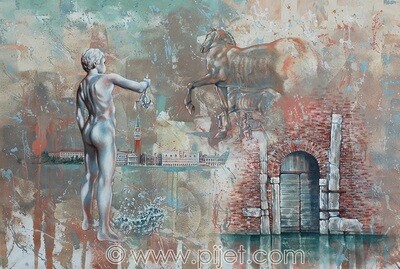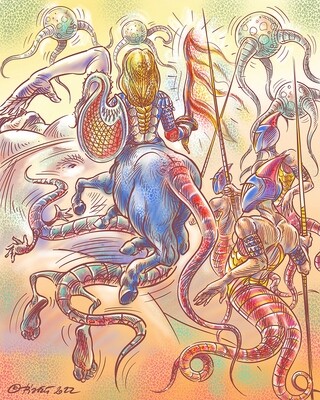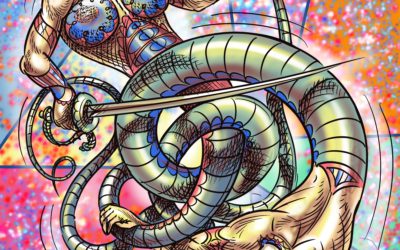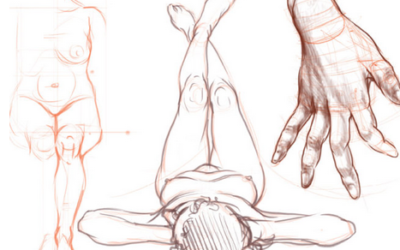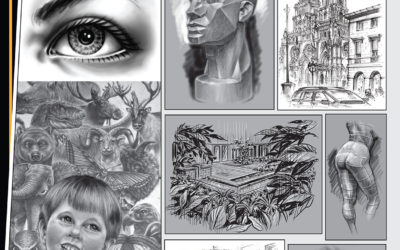Artemisia Gentileschi: Female Quest for Artistic Glory or Personal Vengeance.
The scholarly world of the art history critics projects many conflicting theories when referring to the Artemisia Gentileschi’s artwork. The omnipresent argument surfacing every time is that her art is motivated mostly by the trauma of her personal experiences as a female exposed to the Patriarchal system of her contemporaries. What motivated the artist to express herself the way she did could not be proven hundred percent and the basic question still remains unanswered leaving place to the variety of scholarly interpretations of her artwork. Was she trying to impose herself as a female artist and proof at the same time that she is as skilled as the male artists are or was she trying to avenge to some degree her personal misfortune and her disgust with the surrounded her phallic society? Looking for answer by taking in consideration the themes of her paintings might confirm that she was somehow marked by her personal tragedy. However, what complicate such easy judgment is the virtuosity and the intelligence of her elaborated compositions.
Browsing through Gentileschi’s most significant artworks in her carrier, such as “Susanna and the Elders” (see fig.3), “Judith beheading Holofernes” (see fig.1 and 2), or her self-portrait “The Allegory of painting” (see fig.4), bring in evidence her great artistic talent of the intelligent logic of her conceptions. She created her own particular chromatic expression mixing the Caravaggio’s and her father’s Orazio painting styles, and as such she marked the Baroque as the most interesting female artist of that era.
The period of time before and during Artemisia Gentileschi’s creative epoch was filled up with many known and unknown female artists active in painting and in many other categories of art mostly decorative as embroidery and manuscripts. Some of them were more talented than the others, working most of the time in the family ateliers as helpers,[1] or partners.[2] Gentileschi was not known[3] much and considered as a minor painter until discovered again during the organization of the exposition titled “Women Artists: 1550 to 1950,” in the Los Angeles County Museum of Art in 1976.[4] There is not much written information available about her art because she was completely ignored by her contemporaries, writing about art as Mancini,[5] Scannelli,[6] Bellori,[7] or Passeri.[8] What makes her paintings standing out from the other canvases done by women artistes before Artemisia, or after her, is Gentileschi’s courage to abort the subject of female heroic presence in the men’s world. Gentileschi was one of the first female artists with the precursory feministic views of women’s important presence in Patriarchal social order, where role played by a woman was established by definition as domestic and procreative. She was also one of the first female painters able to provide for herself with her artwork. In regard to the time she was living in, it was an innovatory approach to make a socio-political statement in her artwork by the use of biblical stories and historic references to the female heroines.[9] Her paintings are fulfilled with the power of feminine presence in the world of men. She painted women strong physically and mentally. Most of the bodies of her painted heroines are solid, powerful, and almost mannish.
Gentileschi did not leave many canvases, and these available to us are still of controversial origins causing disagreements among scholars.[10] One of her most known painting “Judith slaying Holofernes,” (see fig.1) is the most violent image she ever painted, and it was a theme, which she interpreted few times in different ways during her artistic carrier.[11] The first interpretation[12] of the biblical story of Judith and Holofernes,[13] she painted between the years 1612th and 1613th. The 1612th was a year of the Agostino Tassi’s trial for the rape of Artemisia Gentileschi.[14] Tassi was a painter and close collaborator of her father Orazio Gentileschi. According to many scholars, it is possible that the choice of the subject was motivated by her personal inconveniences of the trial, during which Gentileschi suffered public humiliation. She was tortured with thumbscrews and passed gynecological exams in order to proof the rape accusations in the court. Most scholars and art critics agreed that Artemisia painted the scene probably as the expression of her desire to avenge her humiliation. Under the cover of the biblical story she depicted her psychological state of mind and her frustration with the man as a principal cause of her unfortunate experience. By scrutinizing the painting symbolic elements of composition, it is possible to agree with some previously proposed interpretations by different scholars. Marcia Pointon[15] (1991) for example, suggested that Artemisia recomposed previously painted version of this theme by Caravaggio[16] to depict the murder of Holofernes through her own imaginary view of the childbirth. Her arguments are based on the composition of Holofernese’s arms, which symbolize the woman’s opened tights in “V” shape, and the mouth of Assyrian general as a shape of vagina surrounded by the hair and the bird as a reference to the pubic hair. Also the positioning of the bodies Judith and her maid Abra refers to the way the midwife would be placed with her assistant during the process of child delivery. Dissecting the painting with visual attention makes possible such interpretation. With little more imagination, the left arm of Holofernes might as well be symbolic visualization of the phallus, as remarked earlier by Joseph Slap (1985) in his interpretation of Gentileschi’s painting. Taylor Graeme (1984) refers to the first version of Gentileschi’s painting from 1612th as a combination of both: childbirth and castration processes. His assumptions were based on the analyzes of the folds on the Holofernes’s neck. All these interpretations are possible and quite convincing after closer studies of the painting’s composition elements. However, such deductive approach might be as well just a matter of simple coincidences and the artist did not intend it. What is interesting in Gentileschi’s interpretation of this biblical story is the emphasis on the violent depiction of this event. The theme of Judith and Holofernes was explored in completely different ways by contemporary to her and earlier living artists.[17] All of them were males. Their depiction of the biblical tale is very static and gentle, in some cases even elegant, where all aspects of such violent act are rather suggestive not active as it is in Gentileschi’s case. Caravaggio was one of the first to illustrate the biblical episode in action. The act itself does not have so much energy like in Gentileschi’s version. The reason for such different approach is evident. Gentileschi painted her version of Judith story based on her own tragic experiences. She was certainly inspired by Caravaggio’s interpretation of this tale, as she was a great lover of his artwork and the faithful follower of his painting style, which she successfully adopted with her father’s help. What makes this painting to stand out from any other interpretations of this theme before is her very personal touch of a woman’s brush. She exteriorized through this story her blessed female dignity. Yet, in fact the painting is loaded with a strong socio-political statement rather than canalization of Gentileschi’s desire of revenge. She knew that to get the attention she was seeking for as a female artist she needs to provoke the viewer and the remake of the famous biblical story was exactly what she needed to do.
Gentileschi changed the composition angle in order to create three dimensional and very powerful images. Playing with the chiaroscuro technique, she created very successfully a tragic atmosphere of the moment of murder. From Gentileschi’s canvas the violence is just bursting at the spectators. In the second version (see fig.2) of the same theme, the image is even more powerful, as the blood is spouting almost at the viewer in parabolic movements. The significant difference between these two versions is the way the blood spouts from the Holofernes neck. Mary Garrard explains it in her story about Artemisia, as possible homage to Galileo’s theory of the trajectory of the planets. Gentileschi knew Galileo, and he helped her on one occasion to receive a payment for her two paintings she had sent to the Ferdinand II. It seems possible, but what probably happened was rather artist’s observation of real slaughter of animal in the butcher’s shop or some other place in order to depict more realistically such violent event. In the second version of this biblical story, the blood flow is much more realistic than in the first one. At the same time it emphasizes the movement of the cutting hand.
Regardless of all these deductive suppositions Gentileschi succeeded as an artist and as a woman in making a strong socio-political statement. Statement of frustration and disaccord with existing social order created and maintained by the Patriarchal system. By such convincingly elaborated picture, she visualized her voice, the voice of disapproval for the surrounding realities of women’s existence and their sexual exploitation. Many scholars suggest that the principal inspiration for Gentileschi’s interpretation in such violent way of the biblical tale “Judith beheading Holofernes” was the rape of her by Tassi. However, taking in consideration her first signed artwork “Susanna and the Elders” (see fig.3), it is evident that even before the rape Gentileschi was already conscious and concerned by the social fragility of the female existence in the surrounding her Patriarchal social order. It is possible that Gentileschi as a young girl[18] already contested her contemporary realities in her first signed painting. This artwork according to Pollock has uncompleted composition because of missing an important element of the biblical story such as the trees. However, how about assuming that Gentileschi as inexperienced as she seems to be proved her brilliance by suggesting in very intelligent way the presence of the trees in the opposite faces of the elders. The elders themselves present the trees. Furthermore, the balustrade, which separates Susanna from the elders, symbolizes at the same time the court of justice where they were judged after Daniel’s intervention to save Susanne. Such elaborated suggestive symbolism is present in all Gentileschi’s paintings. The seemingly evident content of her imagery has a double meaning. Ignoring to paint the trees she focus stronger attention of the viewer on the narrative of the biblical story. Further attentive examination of the painting reveals another interesting symbol. The white shirt of the elder on the left has a shape of white lily, which symbolizes virginity. Why would Gentileschi paint the shirt as a lily? Maybe she already was molested by Tassi then and wanted to exteriorize her worries. The positioning of the hands surrounded the lily tells the entire story. Even if she did made a reference to her personal inquietudes, one has to recognize her brilliant artistic creativity. Griselda Pollock made interesting connection between the paintings of “Susanna and the Elders” and “Judith beheading Holofernes.” She remarked the reversed composition of depicted characters. The two elders from “Susanna and the Elders” painting were replaced by two women in “Judith beheading Holofernes” artwork. Assuming that she did it consciously would prove further her creative genius. The violent depiction of “Judith beheading Holofernes” could be just continuation of her discontent with surrounding her realities. The expressive approach to the subject could be emphasized by her personal disappointment with the male gender. There is no proof of what really happened between Gentileschi and Tassi. If Agostino raped Artemisia, or she was in love with him[19] it does not change the fact of her discontent. In either case she was mislead by the man she believed would respect her honor and keep his promises.[20] Gentileschi’s depiction of “Judith beheading Holofernes” is as shocking to the viewer as it was shocking for Gentileschi to be lied to. She expresses her emotional state and her disapproval of dishonesty in the strongest way possible. By cutting the head of Holofernes, she contests symbolically the end of Patriarchal tyranny and injustice towards women. It is a visual protest against the omnipresent sexism and exploitation of women. By her pictorial statement she rejected the conventional feminine role imposed on women by men.
While some scholars promote their strong convictions about the semiotic references of Gentileschi’s representation of the famous biblical story, Griselda Pollock suggested that the painting of “Judith beheading Holofernes” is rather nothing more than an illustration of the heroic action undertaken by the Jewish widow to save her compatriots. Such statement is quiet interesting from the feminist point of view. It is certainly annoying to accept the wide spread of sexist interpretations of Gentileschi’s motivation to depict the biblical story the way she did. However, taking in consideration Gentileschi’s unfortunate accident and the time of the first execution of this painting it is quiet understandable that most scholars interpret it as a sort of vengeance dedicated to her offender and those who protected him. For example, as Ward Bissell’s suggestion that Gentileschi consciously or unconsciously depicted Agostino Tassi as a Holofernes. After closer look at her first signed painting “Susanna and the Elders,” it becomes quite evident that Gentileschi already depicted Tassi’s face as one of the elders. These two faces, the left sided elder character and the Holofernes resemble very much. Maybe already than she remarked something evil in his face and decided to use it as a model for her composition. Following this path, the second elder might be as well her father, Orazio Gentileschi. It is not surprising that anyone who knows Gentileschi’s story would read the artist’s message as a psycho-biographical artistic statement. Sometimes it might be just wrong way to understand the artist’s motive. However, it is important to notice that the stories of “Judith beheading Holofernes” and the story of “Susanna and the Elders” were quite popular among the social circles of the Baroque society. These two paintings prove Gentileschi’s artistic virtuosity in construction of elaborated intelligent drama sustained by her intimate symbolism. It is hard to dissociate Gentileschi’s artwork from the strong possibilities of the personal cause as the main source of her artistic creativity.
The studies of Gentileschi’s other paintings[21] reveal that in most of the themes of her canvases, her heroines are somehow involved in rape, or other misfortunes in the world ruled by men. Her artwork is about fight against the underestimated significance of women values in the society she lived in. With the beautifully colored, honest, and magnificent compositions she imposes on her contemporary the image of women as heroes. Gentileschi overwrites the reduction of women significance by men to the object of sexual desires. Her later paintings,[22] starting from 1630, are calmer and focused less on the sexist aspects of female image surrounding her. For example, in her paintings “Clio, The Muse of History,” or “Corsica and the Satir,” she is promoting the intellectual qualities of the female kind. Gentileschi proves her precursory qualities in depicting the subjects of her paintings once more in her self-portrait “The Allegory of painting”(see fig.4), a composition of great economy and virtuosity, but most of all the novelty of portraying an artist. Her approach to present female artist self-imagery in such outstanding and elaborated way filled up with perfectly balanced symbolism has been not seen yet before and rarely after. Furthermore, by her intelligent depiction of the principles of the creative process she proved her artistic maturity. She painted herself in parabolic inclination of all body, suggesting the steps of artistic creativity. The point of departure is placed on the palette kept by her left hand and is raising up, passing through a sophisticated drapery of her creativity, passing through the head of the artist’s mind where the final picture is made and the information is sent to be executed by the right hand with the brush. It is a genial way to portrait an artist. She summarized all necessary elements to explain how artists mind works. She presents a suggestive diagram of artistic creativity. Gentileschi is really special and the only one with such intellectually elaborated taste. She depicted herself as a woman artist and a muse at work at the same time. Artemisia was conscious of her values as a female artist. The remaining correspondences between her and her costumers proof it clearly.[23] Gentileschi used the art of painting to represent women’s abilities to achieve as great things as men do. She firmly states her position against existing social inequities. By her particular creative approach, her socio-political statement was noticed, at least in the cultivated circles of the Baroque society.
Gentileschi proved with the excellence of her artwork that she could easily compete with the best male artistes of her epoch. Gentileschi’s artistic quest was not about vengance but a fight for recognition of her incredible talent among her contemporary. She carefully chose the themes of her paintings in order to present to the Patriarchal system in the strongest way possible her concerns. She knew that the best way to do it would be by strong visual argumentation of her cause.
[2] Orazio Gentileschi was periodically working with his daughter Artemisia, whom he himself instructed in the art of painting. She became later one of the most known female painters of Baroque period.
[3] The scholar Roberto Longhi, who in his essay “Gentileschi Padre e Figlia,” was not too much in favor of her talent, introduced Gentileschi to the public already in 1916th. He corrected this injustice later. Another publication about Artemisia, before the 1976 exposition, was her biography written by the Longhi’s wife, Anna Banti in 1947. This biography, titled “Artemisia,” is considered as the most beautifully written about a woman artist, by an artist.
[4] The exposition was inspired by the article of Linda Nochlin “Why Have There been no Great Women Artists?” written in 1971.
[6] Francesco Scannelli, auteur of “Il Microcosmo delle pittura, overro trattato divisio in due libri,” a treaties about Italian painting published in 1657.
[9] Judith and Holofernes, Lucretia and Tarquin, Bathsheba and David, Suzanna and the Elders, Cleopatra, Mary Magdalena, Saint Cecilia, Minerva, Jael and Sisera.
[10] Scholars, Ward Bissell and Mary Garrard, agreed only on 26 Gentileschi’s paintings from a total of 57 cataloged by Bissell, as her own.
[11] The theme “Judith slaying Holofernes,” Gentileschi painted different variations of it 7 times, as much as the theme “David and Bathesba.”
[12] Artemisia Gentileschi painted the first version of “Judith slaying Holofernes” in 1612th – 1613th, and the second sometimes around 1619th – 1620th. The second version seems more violent than the first because of the spurting blood.
[13] Judith, a Jewish widow from noble family, charmed the Assyrian General Holofernes, with the intention to murder him and in the same time liberate her nation from the pagan oppressive enemy. After making Holofernes drunk and falling a sleep, she cut the general’s head with the help of her maid Abra. They brought the Holofernes head to the Jewish camp, insuring their victory over their enemy.
[14] Orazio Gentileschi hired his collaborator Agostino Tassi, who was known from his technical knowledge of building perspectives, to teach Artemisia about it. Tassi considered a secondary painter, use the opportunity to seduce and rape Artemisia when she was nineteen and by promises of marriage he was able to continue the sexual relationship with her almost one year, until her father learned about it. Orazio, filled betrayed decided to seek a legal justice for dishonor of his and his daughter reputation. Tassi was prosecuted and put in prison. According to various sources he spent in jail 5 month, 8 month, or one year. The final few pages of the verdict are missing from the archives, that is why there do not exist proofs of the exact judgment. However, it is known that in the end he was pardoned and let to be free. The most recent research conducted by Alexandra Lapierre, the auteur of biographical novel “Artemisia” (1998), reveal that Tassi was charged and had a choice to be send for five years of hard labor or exile from Rome. He chooses exile, but was back in Rome after four month, probably because of his connections in higher social circles. He was also previously charged with rape of his daughter in law and the disappearance of his wife, whom he married after raping her.
[17] Donatello, Sandro Botticelli, Andrea Montegna, Giorgione, Lucas Cranach the Elder, Jan Massys, or Christofano Allori.
[19] In the movie “Artemisia,” (1998) realized by Agnes Merlet, the story of Gentileschi’s rape is presented as a love affaire between two consent adults. Such interpretation of Gentileschi’s story raises controversial concerns by the feminist organizations in USA and Canada.
[20] Agostino Tassi could not keep his promises, even if he wished to do so. He was already married at the time he met Gentileschi, what excluded him automatically from serious consideration for future husband. For several months he took advantage of Artemisia promising her marriage.
[21] “Lucretia and Tarquin,” “Bathsheba and David,” Suzanna and the Elders,” “Cleopatra,” “Mary Magdalena,” “Jael and Sisera’” Esther before Ahasureus,” “Saint Cecilia.”
[22] “Allegory of Painting,” “Clio, the Muse of History,” “Lot and His Daughters,” and “Corsica and the Satir.”
[23] In the letter to Antonio Ruffo, dated August 7th, 1649 (Garrard 394), she wrote, ”I will show your Illustrious Lordship what woman can do.” In another letter to the same person written the November 13th, 1649 (Garrard 397), she assured Ruffo that he will like her work and “will find the spirit of Caesar in this soul of the woman.”
Bibliography.
Alexandra Lapierre. Artemisia. Grove Press, New York, 2000.
Babette Bohn. Artemisia Gentileschi and the Authority of Art by R. Ward Bissell. Renaissance Quarterly, Vol. 54, No. 1 (Spring, 2001), pp. 275-277.
Benedict Nicolson. Orazio Gentileschi and Giovanni Antonio Sauli. Artibus et Historiae, Vol. 6, No. 12 (1985), pp. 9-25.
David Topper, Cynthia Gillis. Trajectories of Blood: Artemisia Gentileschi and Galileo’s Parabolic Path. Woman’s Art Journal, Vol. 17, No. 1 (Spring – Summer, 1996), pp. 10-13.
Elizabeth S. Cohen. The Trials of Artemisia Gentileschi: A Rape as History. Sixteenth Century Journal, Vol. 31, No. 1, Special Edition: Gender in Early Modern Europe (Spring, 2000), pp. 47-75.
Griselda Pollock. The Female Hero and The Making of a Feminist Canon: Artemisia Gentileschi’s Representations of Susanna and Judith. Differencing the Cannon: Feminist Desire and the Writing of Art’s Histories. London and New York: Routledge, 1999, 97-127.
Harold Osborne. The Oxford Compagnon to Art. Oxford University Press, 1970.
Jeanne Morgan Zarucchi. The Gentileschi “Danae”: A Narrative of Rape. Woman’s Art Journal , Vol. 19, No. 2 (Autumn, 1998 – Winter, 1999), pp. 13-16.
John T. Spike. Review: Artemisia Gentileschi. Florence, Casa Buonarroti. The Burlington Magazine, Vol. 133, No. 1063 (Oct., 1991), pp. 732-734.
Jozef Grabski. On Seicento Painting in Naples: Some Observations on Bernardo Cavallino, Artemisia Gentileschi and Others. Artibus et Historiae, Vol. 6, No. 11 (1985), pp. 23-63.
Laura Benedetti. University of Oregon Reconstructing Artemisia: Twentieth-Century Images of a Woman Artist. Comparative Literature, Vol. 51, No. 1 (Winter, 1999), pp. 42-61.
L. Frohlich-Bume. A Rediscoverd Picture by Artemisia Gentileschi. The Burlington Magazine for Connoisseurs, Vol. 77, No. 452 (Nov., 1940), p. 165+169.
Marie-Jo Bonnet. Les femmes dans l’art. Editions de La Martiniere, Paris, France, 2004.
Mark Leonard, Narayan Khandekar, Dawson W. Carr. “Amber Varnish” and Orazio Gentileschi’s “Lot and His Daughters.” The Burlington Magazine, Vol. 143, No. 1174 (Jan., 2001), pp. 4-.
Mary D. Garrard. Artemisia Gentileschi’s Self-Portrait as the Allegory of Painting Bulletin, The Art, Vol. 62, No. 1 (Mar., 1980), pp. 97-112.
Mary D. Garrard. Artemisia Gentileschi’s “Corisca and the Satyr.” The Burlington Magazine, Vol. 135, No. 1078 (Jan., 1993), pp. 34-38.
Michael Levey. Notes on the Royal Collection – II Artemisia Gentileschi’s “Self-Portrait” at Hampton Court. The Burlington Magazine , Vol. 104, No. 707 (Feb., 1962), pp. 79-81.
Richard E. Spear. Artemisia Gentileschi: Ten Years of Fact and Fiction. The Art Bulletin, Vol. 82, No. 3 (Sep., 2000), pp. 568-579..
R. Ward Bissell. “Artemisia Gentileschi-A New Documented Chronology.” The Art Bulletin, Vol. 50, No. 2 (Jun., 1968), pp. 153-168.
Simona Bartolena. Femmes artistes: De la Renaissance au XXI siecle. Editions Gallimard, France, 2003.
Suzan Major Germond. Orazio Gentileschi and S. Giovanni dei Fiorentini. The Burlington Magazine, Vol. 135, No. 1088 (Nov., 1993), pp. 754-759.
Susanna Scarparo. “Artemisia”: The Invention of a “Real” Woman. Italica, Vol. 79, No. 3 (Autumn, 2002), pp. 363-378.
Thomas DaCosta Kaufmann. “Esther before Ahasuerus:” A New Painting by Artemisia Gentileschi in the Museum’s Collection. The Metropolitan Museum of Art Bulletin, New Series, Vol. 29, No. 4 (Dec., 1970), pp. 165-169.

